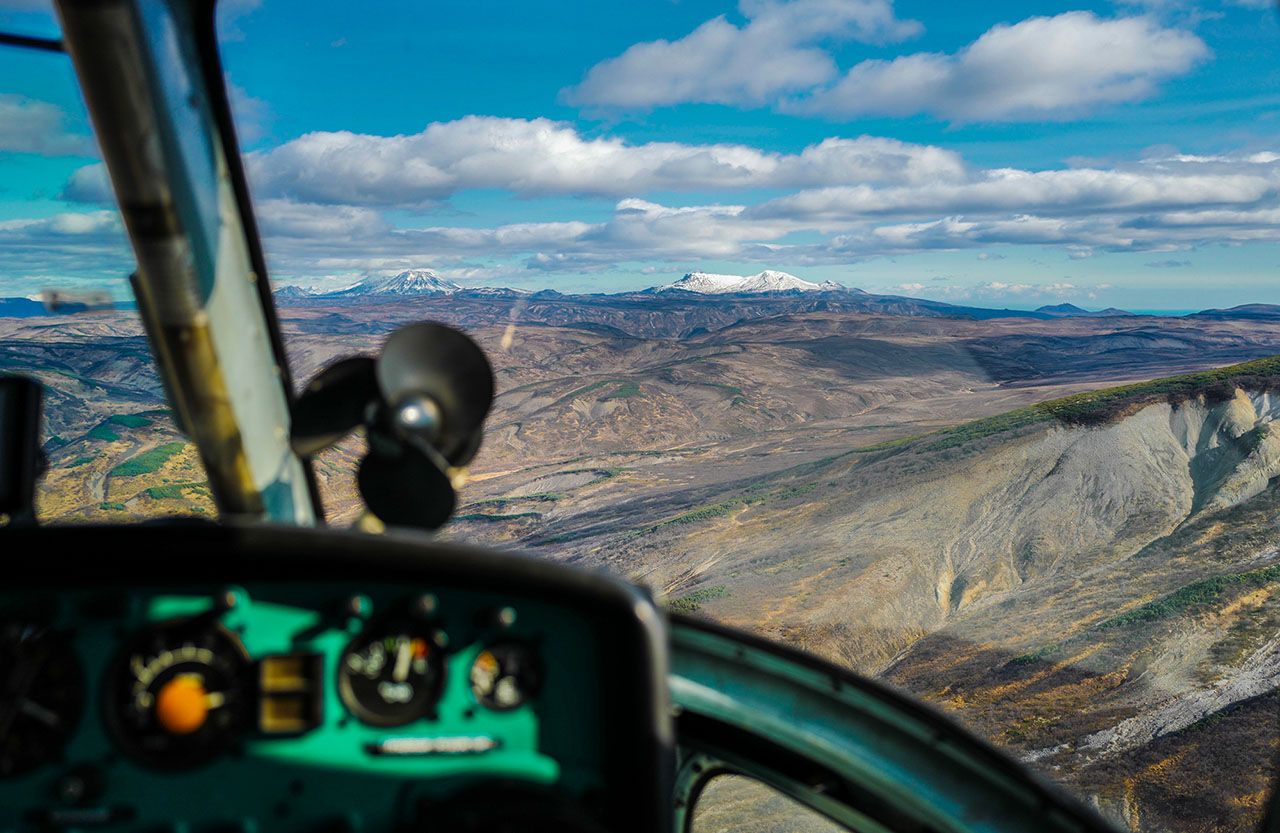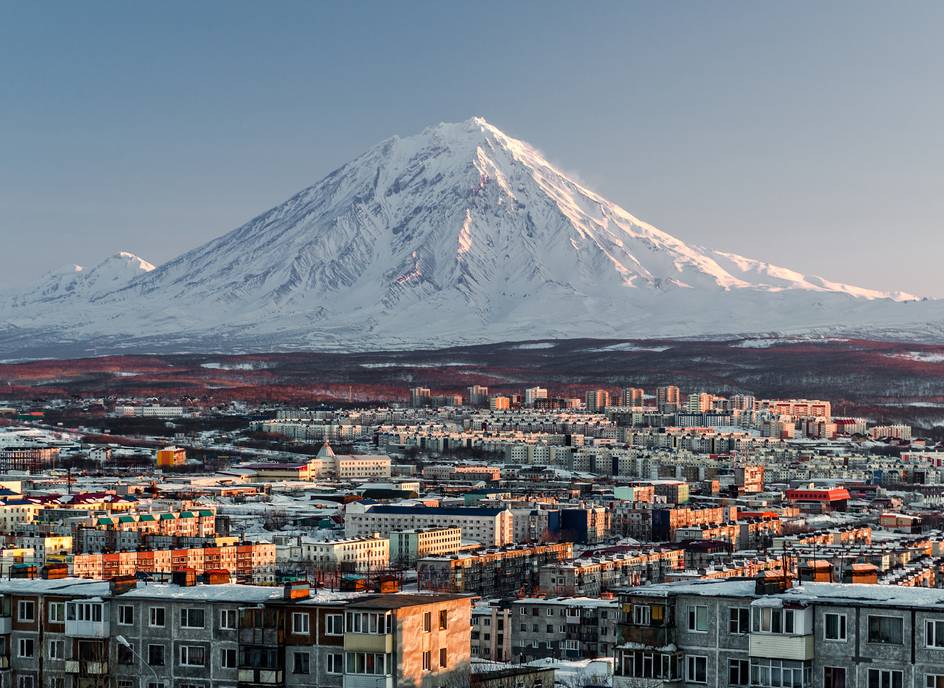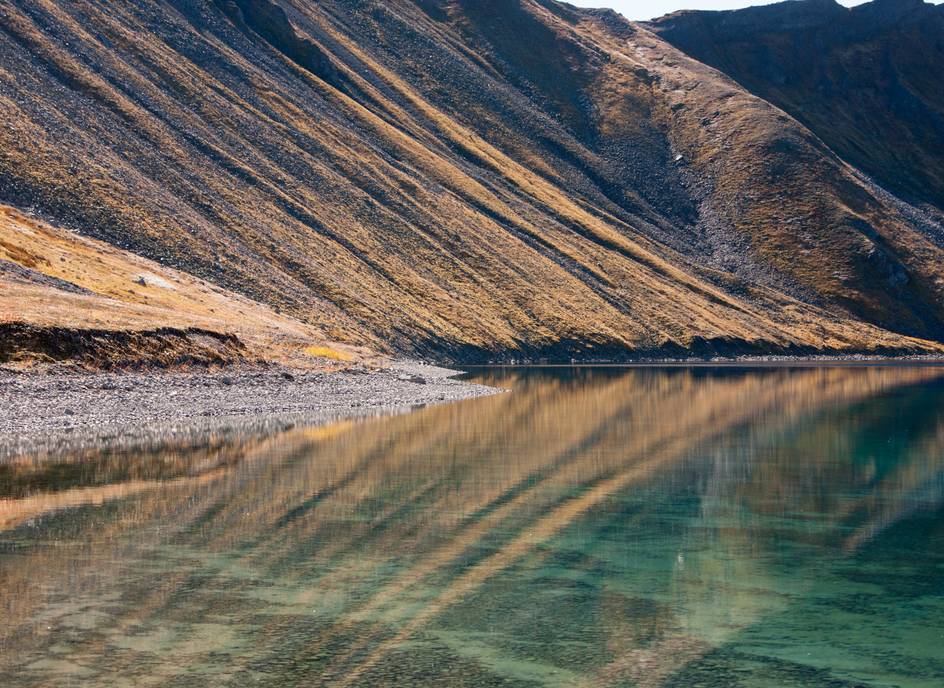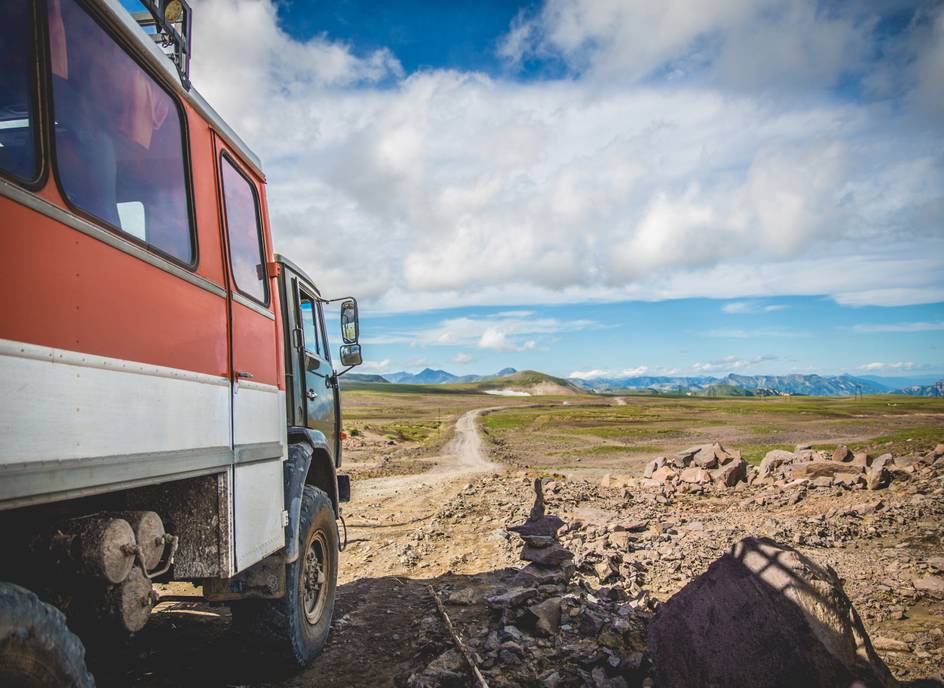
One of the most famous and richest biosphere reserves around the world! It has everything: fumarole lakes and geysersee, deserts and dense forests, cliffs and volcanoes... This place is so rich in diverse natural beauty that it's possible to spend a week, constantly moving, and never seeing a familiar landscape.

Unfortunately, the only way to get to the reserve is by helicopter. The flight will leave you with totally unforgettable emotions and clearly demonstrate the scale of this unique place. Don't be surprised if you see from the air what looks like a Martian landscape or an unexpected pack of bears running around… No, this is not a fairy-tale dream, but an ordinary day in the Kronotsky reserve.

The helicopter almost landed on a clubfoot spruce; within 60 meters there was a bear collecting berries, and we realised that we were in the heart of the wildlife. We were met by a local guide with a gun (in the reserve they are all walking around with guns; not to kill: it's in case of danger they make a loud noise and scare the beast). We were instantly told that the highest Giant geyser erupts every 40 minutes and if we want to see the next eruption, we'd need to hurry.

Of course, the Valley of Geysers is the pearl of Kamchatka and one of the brightest of its natural attractions. It is ncluded in the top five most outstanding geographical discoveries of the 20th century. The valley was discovered in 1941 by accident by two members of the Kronotsky Nature Reserve workers - a geologist Tatyana Ustinova and her assistant Anisifor Krupenin. They wanted to find the sources of two rivers with opposite names, Quiet and Noisy, and as a result ran into a place where out of the ground erupted powerful reserves of hydrogen sulphide.
The Valley, in size, loses only to the valley in the Yellowstone American park. By the way, this is no ordinary mountain plateau, but the bowl of an ancient lake that had disappeared centuries ago.
Due to the hot, wet, metal-rich microclimate, spring here comes a month earlier than in neighbouring areas. This event does not remain unnoticed by the local bears that emerge from hibernation and gather at the springs to warm up and enjoy the first fresh grass. Nowhere else in Kamchatka will you see so many of these predators in one place.

After seeing the Valley of Geysers, we again boarded the helicopter and went to the legendary Uzon Caldera. The pilot clearly outlined our time - we had two hours to fly out before dusk. We hurried. It seemed like you were on another planet: the colour, the scale, the air - it's like the scenery from "Star Wars."
In general, let’s start with what is a caldera (Spanish - "bowl", "pot"), and how it differs from a crater. Caldera is also circular, but is much larger and can reach a length of 10 or even 20 km.

Uzon Caldera was formed about 40 thousand years ago. There are more than a hundred lakes and streams, which, even in the winter do not cool down to a temperature below 40 degrees. And also: mud pots and small copies of volcanic steam springs, natural "sauna" in craters... Uzon looks like a lab of genius, but slightly a mad scientist whose potions explode, evaporate, and change colour and form.



















